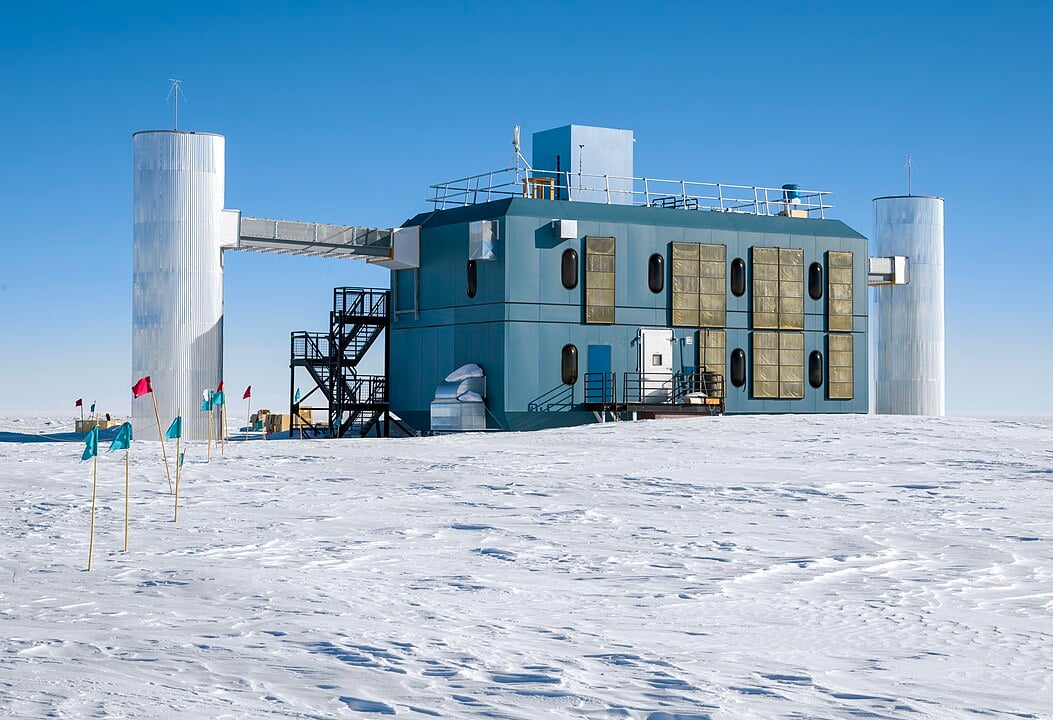Deep beneath the ice at the South Pole sits one of the world's most extraordinary scientific instruments: the IceCube neutrino detector. Since 2009, this massive facility has been hunting for ghostly particles called neutrinos that constantly bombard Earth from the depths of space.
Neutrinos are among the most elusive particles in the universe. They can travel through space and matter over vast distances without interacting with anything, earning them the nickname "ghost particles." Trillions of them pass through your body every second without you feeling a thing. Even while you read this article, trillions will be passing through your body. This makes them incredibly difficult to detect, but also perfect messengers from the cosmos.
 IceCube Neutrino Observatory in 2023 (Credit : Christopher Michel)
IceCube Neutrino Observatory in 2023 (Credit : Christopher Michel)
Unlike other particles that can be deflected by magnetic fields or absorbed by matter, neutrinos travel in straight lines from their source to Earth. This makes them ideal for finding the mysterious origins of cosmic radiation; high energy particles that continuously shower our planet from unknown sources throughout the universe.
Professor Anna Franckowiak and her team at Ruhr University Bochum have developed groundbreaking algorithms that can determine a neutrino's energy and direction in just 30 seconds. This represents a massive improvement in speed and precision compared to previous methods, making trajectory calculations four to five times more accurate.
The speed is crucial because when IceCube detects a high energy neutrino, it immediately sends alerts to telescopes around the world. These observatories then quickly scan the region of sky where the neutrino came from, searching for any particularly energetic celestial objects that might have produced the particle.
"These celestial objects might only light up very briefly, so it's crucial that our system works in real time" - Professor Anna Franckowiak, Research Group for Multi-wavelength and Multi-messenger Astronomy.
The process works like a detective story. First, IceCube spots a neutrino and calculates its path using the new rapid algorithm. Within half a minute, telescopes worldwide receive an alert and begin searching that patch of sky for unusual activity. Meanwhile, a more sophisticated algorithm refines the initial calculations to provide even greater precision.
This improved technology has already yielded surprising results. The researchers had previously considered tidal disruption events as potential neutrino sources. These dramatic events occur when a star wanders too close to a massive black hole and gets torn apart by the intense gravitational forces.
Over the years, IceCube had detected three neutrino events that seemed to match the timing and location of such stellar destruction. However, when the team reanalysed this data using their improved algorithms, they discovered the neutrino paths didn't actually align with where the tidal disruption events occurred. This ruled out these particular black holes as neutrino sources, eliminating some candidates but bringing scientists closer to the truth.

